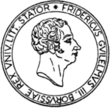The automatically multiplying calculating machine by François Timoléon Maurel and Jean Jayet from the year 1846
Clock maker François Timoléon Maurel came up with the idea of constructing a calculating machine capable of automatic multiplication. This means that to multiply by 9 the user does not need to turn a crank nine times, but in this case he only has to point an indicator needle to the digit 9 via a wing bolt. That approach was a lot more practical than with most other calculating machines of the time. In 1842, he was granted the first patent for it and built the first prototypes – one of them is now in the Arithmeum as a permanent loan from the IBM collection, a fact that we are very happy about. The prototype clearly shows the advantages of its construction. However, it was not yet suited to series production. Jean Jayet, business-minded engineer, realized the potential of this invention and revised the first designs together with Maurel. In 1846, they got a joint patent for the Arithmaurel. The mechanics of this later design are still carefully thought-out, highly filigree and most interesting on a technical level. Thomas Koppelberg, a student of Computer Science, made a 3D animated video to explain the functioning of the Arithmaurel as part of his bachelor’s thesis for Professor Dr. Ina Prinz. The video shows the fascinating construction in a didactically excellent way that makes even complicated details easily understandable. The calculating machine received the gold medal at the Exposition nationale in Paris in 1849. You will certainly be able to appreciate the particularly beautiful mechanics of the Arithmaurel when watching this video.






